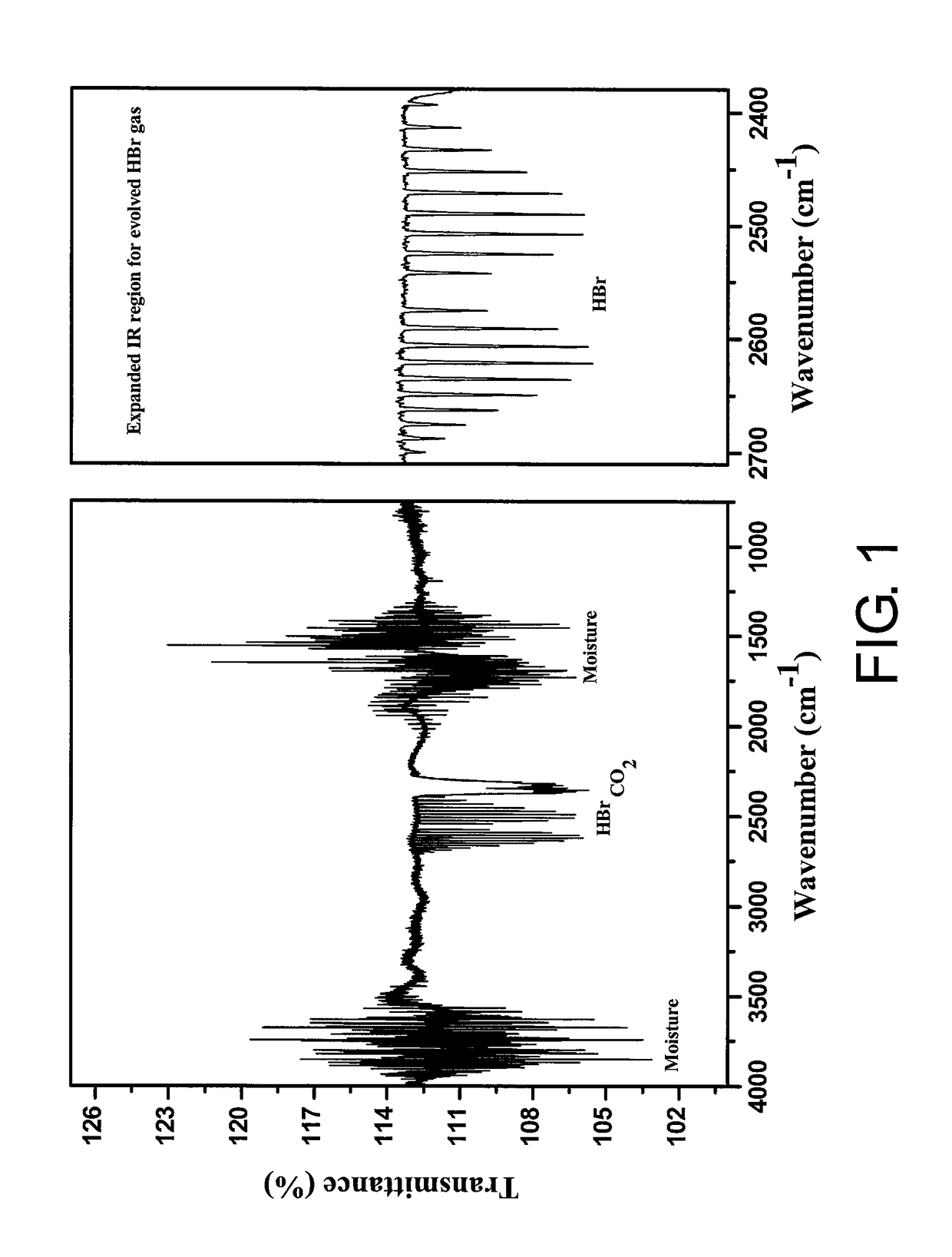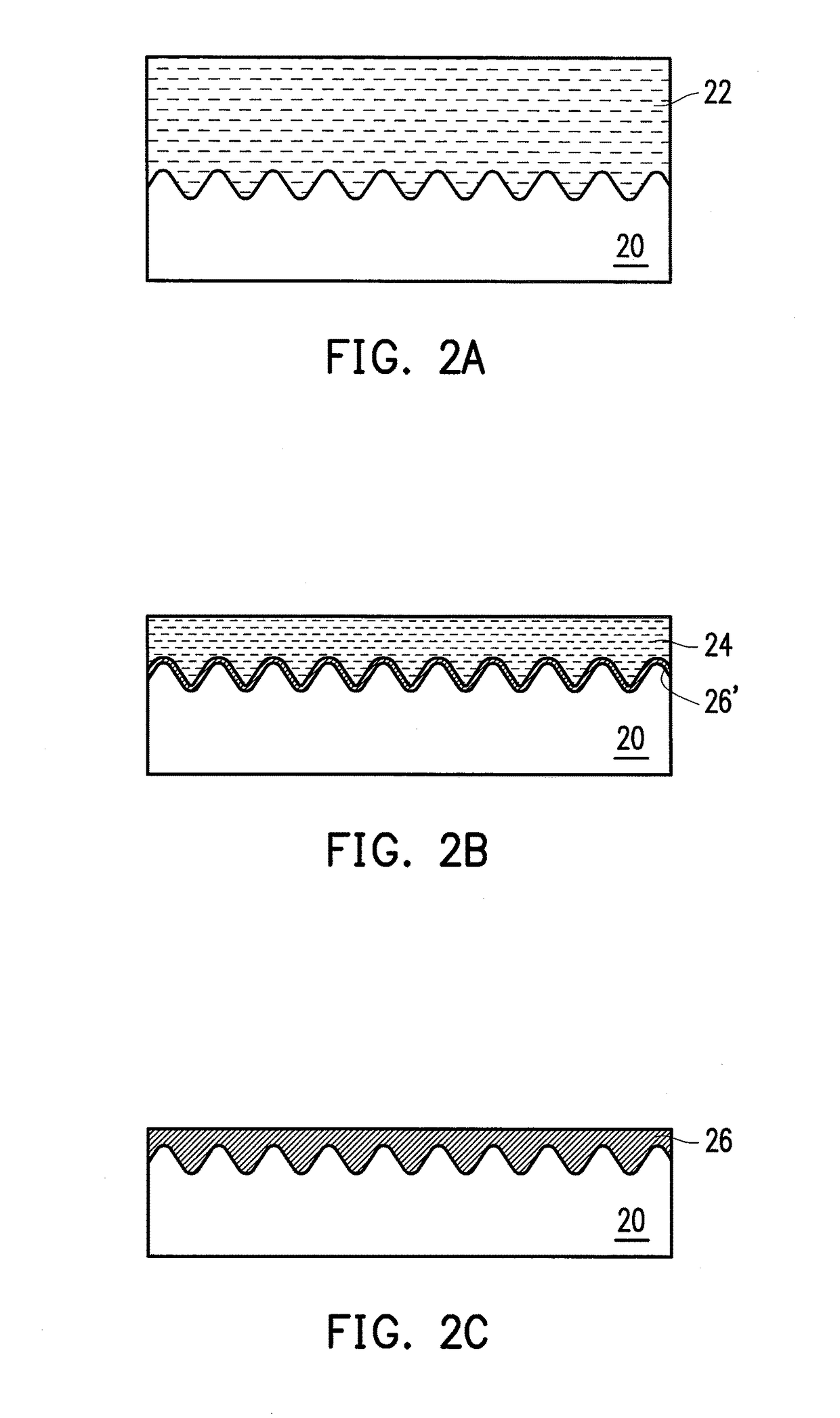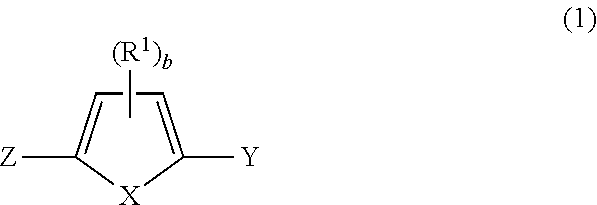Method for forming conjugated heteroaromatic homopolymer and copolymer, and products thereof
a heteroaromatic polymer and copolymer technology, applied in the field of conjugated heteroaromatic polymer and conjugated heteroaromatic polymer or copolymer, can solve the problems of large limitations on the allowable functional groups of thiophene monomers, long term stability, and detrimental effects of optimal performance, and achieve low cost and environmental protection. , the effect of effective method
- Summary
- Abstract
- Description
- Claims
- Application Information
AI Technical Summary
Benefits of technology
Problems solved by technology
Method used
Image
Examples
example 1
ation of a Neat Liquid of 2-bromo-3-(butylthio)-thiophene (BBTT) catalyzed by trifluoroacetic acid (TFA)
[0085]A neat liquid of 2-bromo-3-(butylthio)thiophene (1.00 g; 3.98 mmol) was mixed with 1.65 equiv of trifluoroacetic acid (0.74 g; 6.49 mmol) in a single neck round bottom flask at room temperature (rt; 25° C.). After the addition, the colorless liquid first became red-brown liquid, and then turned into a dark blue gel within 5 minutes with the evolution of lot of smoke. The evolved smoke was confirmed by infrared spectrum to be a HBr gas, as shown in FIG. 1. The gel was not able to be stirred and was kept as such for 24 hours at room temperature. Then, the thick blue gel was dissolved in dichloromethane (20 mL), washed successively with ˜5% aqueous sodium hydroxide solution (10 mL) and two times with water (10 mL each time). The resulting red-brown color solution was dried over anhydrous magnesium sulfate and concentrated in a rotavapor to get a thick red brown gummy solid in q...
example 2
ation of BBTT Catalyzed by TFA in Toluene
[0090]A toluene (4.5 mL) solution of BBTT (1.50 g; 5.97 mmol) was polymerized with 0.5 equiv of trifluoroacetic acid (0.34 g; 3.98 mmol) in a single neck round bottom flask under nitrogen atmosphere at room temperature (rt; 25° C.). After the addition, the colorless solution became red-brown immediately, which then turned into a dark blue viscous solution within 30 minutes, with the evolution of lot of HBr smoke. After stirring for ˜2.5 hours at room temperature, the viscous solution was worked up similarly as in Example 1 to give a red brown gummy poly[3-(butylthio)thiophene] in quantitative yield (1.05 g; ˜100%). The obtained product was characterized similarly as in example 1. Both NMR and IR spectra are found to be essentially the same as the polymer obtained in Example 1, while UV absorption maximum appeared at 453 nm and Mw was found to be 1588 with a polydispersity index (PDI) of 1.45.
[0091]The results of Examples 1 and 2 indicated tha...
example 3-10
on of BBTT by Using Different Types and Different Amounts of Acids
[0092]The acid-catalyzed polymerization of BBTT are generally applicable to different types of protic acids, such as TFA and methanesulfonic acid (MSA), and to a wide range of acid amounts, such as ˜0.1 to ˜4 equiv, as summarized in Table 1. All the polymerization in Table 1 can undergo effectively at room temperature to give essentially quantitative yields (i.e., ˜100%). The polymerizations in Examples 3-6 were done with neat liquid of BBTT, which turned into dark blue solids within 5-10 min after mixing with the specified amounts of acid (Table 1). The resulting solid masses were kept as such at room temperature for the reaction time as specified in Table 1, and then worked up as in Example 1.
[0093]The polymerizations in Examples 7-9 were also done initially with neat liquid of BBTT. In these cases the reaction mixtures all turned into dark blue solids within about 1 h, then 3 mL toluene was added into the each reac...
PUM
| Property | Measurement | Unit |
|---|---|---|
| temperature | aaaaa | aaaaa |
| temperature | aaaaa | aaaaa |
| temperature | aaaaa | aaaaa |
Abstract
Description
Claims
Application Information
 Login to View More
Login to View More - R&D
- Intellectual Property
- Life Sciences
- Materials
- Tech Scout
- Unparalleled Data Quality
- Higher Quality Content
- 60% Fewer Hallucinations
Browse by: Latest US Patents, China's latest patents, Technical Efficacy Thesaurus, Application Domain, Technology Topic, Popular Technical Reports.
© 2025 PatSnap. All rights reserved.Legal|Privacy policy|Modern Slavery Act Transparency Statement|Sitemap|About US| Contact US: help@patsnap.com



